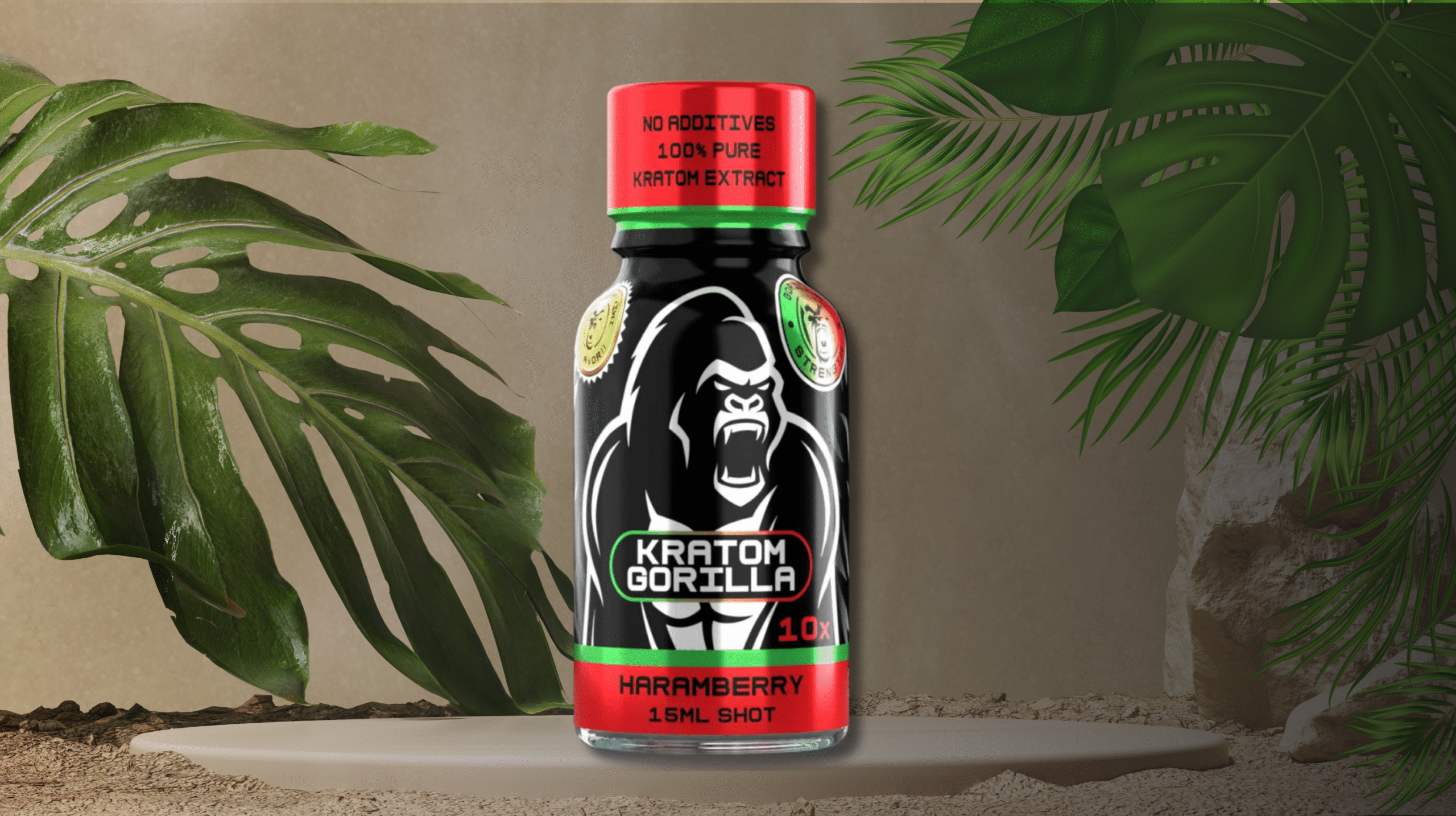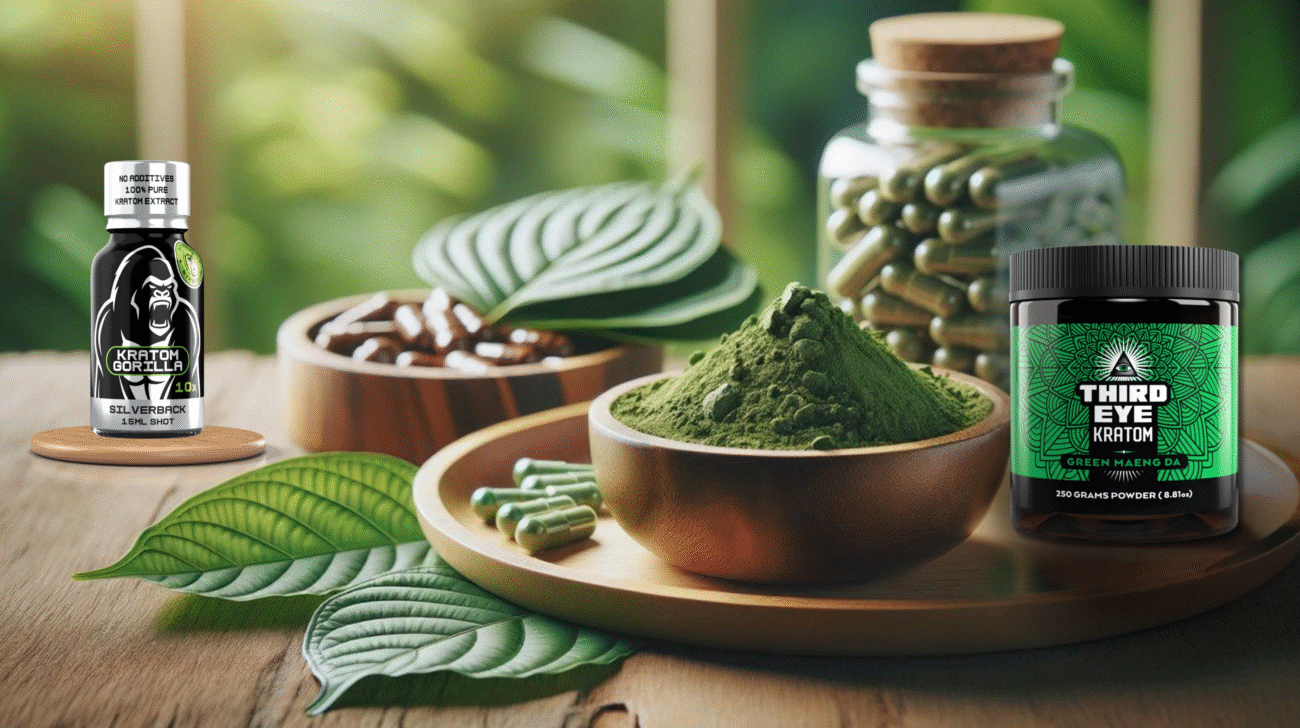Tag Archives: Guide
Comparing Third Eye And Kratom Gorilla: Which Herbal Supplement Suits Your Needs?
Third Eye and Kratom Gorilla are two of the most popular herbal supplements available on the market. They have plenty of advantages. It is crucial to be mindful of the differences between the two to determine which best meets one’s needs.
Understanding the Origins
Third Eye and Kratom Gorilla possess different roots, which are inherently compelling to their work. Third Eye is from Ayurveda, and Kratom Gorilla is from Southeast Asia’s herbal medical system known as Jamu.
Worried about the ingredients?
Here is a list of the main ingredients and their benefits for you
These supplements are best described and distinguished by their ingredients. The third Eye often comprises adaptogens and nootropics, while kratom gorilla is rich in some strong alkalinizing agents such as mitragynine and 7-hydroxy mitragynine.

Mechanisms of Action
Third Eye Kratom Supplement is a premium product designed to enhance and boost energy, and support overall well-being. Sourced from high-quality kratom leaves, it offers a natural solution for those seeking improved focus and vitality. Experience the benefits of Third Eye Kratom and elevate your daily routine with this potent herbal supplement.
Dosage and Usage Guidelines
It is also important to take the right quantity in the right proportions if you are to reap some of the benefits without the corresponding vices. Third Eye is commonly consumed as a nutrient in capsules or powders, usually every day. Kratom Gorilla dosage depends on the duration and the type of effect required; there is a low dosage for energizing.
Legal Status and Availability
These supplements are legal in some regions, but their use is restricted in others. Third Eye is freely accessible and a legal entity available in many countries across the globe. From a legal standpoint, Kratom Gorilla is a little ambiguous because some countries or states might not allow the substance.
Comparing Cost and Accessibility
Depending on the price and availability of these supplements, they may play a role in deciding the best course of action. Third Eye is also more accessible and cheaper compared to the premium prices of its brand owners who use medical facilities. Kratom Gorilla may also be slightly more costly and less easy to purchase online due to certain existing legal considerations around it.
Third Eye is suitable for everyone, from businessmen, company owners, and students to ordinary people who want to improve their living and working conditions.
Third Eye is best suited for anyone seeking to upgrade and improve health. The diet is ideal for the person needing a delicate, natural solution to your physical well-being.
Unlock Exclusive Deals — Join Our Wholesale Program Now!
Let’s Wrap Up
In deciding between the two supplements, Third Eye and Kratom Gorilla, specific aspects must be considered, such as your current health status and the results you want to achieve. Third Eye is a great solution for attaining more health benefits. Kratom Gorilla, on the other hand, is an energy booster that is useful. It is always wise to seek the help of a healthcare specialist before using any supplement to avoid some unwanted side effects.
Kratom Explained: Understanding This Botanical Wonder
Kratom, a tropical botanical native to Southeast Asia, has garnered significant attention in recent years. With its growing popularity in various parts of the world, many are curious about what Kratom is and its traditional uses. In this comprehensive guide, we delve into the world of Kratom, providing insights while adhering to regulatory guidelines and disclaimers.
What is Kratom? Kratom, scientifically known as Mitragyna speciosa, is a tropical tree related to the coffee family. For centuries, it has been used in traditional medicine and cultural practices in countries like Thailand, Malaysia, and Indonesia. Its leaves are known for their unique properties, traditionally used by locals for various purposes.
Types of Kratom Strains Kratom comes in various strains, each with its own unique characteristics. The most common strains include:
- Red Vein Kratom: Known for its distinctive red-veined leaves.
- Green Vein Kratom: Recognized by its green-veined leaves.
- White Vein Kratom: Identified by its white-veined leaves.
Each strain is often associated with different traditional uses and preparations.
How is Kratom Used? Traditionally, Kratom leaves were either chewed fresh or dried and brewed as a tea. Today, Kratom is available in several forms, including powder, capsules, and extracts. These forms cater to various preferences, offering versatility in how individuals use Kratom.
Legal and Safety Considerations It’s important to note that the legal status of Kratom varies from country to country and, in the United States, from state to state. We urge you to check the current legal status of Kratom in your jurisdiction before purchasing or using it.
Kratom: A Subject of Debate Kratom has been a subject of debate worldwide. While it has a long history of traditional use in Southeast Asia, its effects and safety profiles are currently being studied in other parts of the world. It’s essential for users to stay informed and approach Kratom use responsibly.
Conclusion: Kratom remains a botanical of interest due to its unique history and traditional uses. Whether you’re new to Kratom or seeking to learn more about it, understanding its origins, types, and traditional uses is key to appreciating this botanical wonder.
Disclaimer: This content is for informational purposes only and is not intended as medical or legal advice. Kratom is not FDA approved, and its efficacy and safety have not been extensively studied. We encourage you to research thoroughly and comply with all local laws and regulations regarding Kratom use and purchase.
Kratom 101: Simple Answers To Your Top Kratom Questions
Kratom, a botanical with a rich history and a diverse range of uses, has become increasingly popular. However, with its rise in popularity comes a sea of questions and sometimes confusion. At Bedrock Botanicals, home to Third Eye, Monarch, and Kratom Gorilla, we believe in empowering our customers through clarity and straightforward information. In this blog, we’ll answer some common FAQs about Kratom, keeping things simple and jargon-free. Remember, it’s crucial to check the legality of Kratom in your state before making a purchase.
1. What is Kratom? Kratom is a tropical tree native to Southeast Asia, with leaves that have been used traditionally for centuries. It belongs to the Rubiaceae family, related to coffee and gardenia plants.
2. What are the Different Strains of Kratom? Each Kratom strain offers a unique experience. At Bedrock Botanicals, we offer strains from Third Eye (like Aurora Maeng Da), Monarch (such as Green Maeng Da), and Kratom Gorilla (including Red Bali). Each brand and strain has its distinct profile.
3. How is Kratom Used? Traditionally, Kratom leaves were chewed fresh or dried and brewed into tea. Modern use includes powdered leaves in capsules, tablets, or as a powder for brewing.
4. Can Kratom be Used for Health Purposes? As a responsible company, we adhere to FDA guidelines and do not make health claims about Kratom. We encourage our customers to research and stay informed.
5. How Do I Choose the Right Strain for Me? Choosing a strain depends on your preferences and the experience you’re seeking. For instance, Third Eye’s White Maeng Da might offer a different experience than Monarch’s Red Bali. It’s about personal preference and the character of each strain.
6. Is Kratom Legal? Kratom’s legality varies. It’s legal in some places but not in others. We urge you to check your local state laws regarding Kratom before purchasing.
Conclusion: Understanding Kratom doesn’t have to be complicated. By breaking down the basics and offering clear, straightforward information, we hope to make your journey into the world of Kratom an informed and enjoyable one. At Bedrock Botanicals, we’re committed to providing quality Kratom products from brands like Third Eye, Monarch, and Kratom Gorilla, within the bounds of legality and safety.
Disclaimer: This content is for informational purposes only. Please check the current legal status of Kratom in your area before making a purchase. The information provided here should not be considered as medical or legal advice
Understanding The Legal Landscape: A State-By-State Guide To Kratom
Introduction: Welcome to the ever-evolving legal world of Kratom, a botanical that has garnered significant attention across the United States. Whether you’re a seasoned Kratom enthusiast or new to the community, understanding the legal status of Kratom in your area is crucial. In this comprehensive guide, we’ll navigate the legal complexities of Kratom on a state-by-state basis. Please note, this information is for educational purposes and should be used as a starting point for your legal inquiries.
Current Legal Status of Kratom in the United States: Kratom’s legal status varies significantly across the United States, with laws frequently changing as new legislation is introduced and passed. For the most accurate and current information, always consult your local government’s resources.
States Where Kratom is Currently Not Permitted: As of today, the following states have laws in place that ban Kratom: Alabama, Arkansas, Indiana, Rhode Island, and Wisconsin. Each state has its unique set of regulations and reasons for the status of Kratom which we delve into in our dedicated articles on each state’s stance
Counties and Cities with Specific Kratom Regulations: Local regulations can sometimes diverge from state and federal laws. Notable examples include Sarasota County in Florida, and San Diego in California, among others. Understanding these nuances is vital for both consumers and retailers.
Understanding the Reasoning Behind Different Legal Decisions: It’s essential to understand the context in which these laws were passed. Many states and localities have public records of the discussions and decisions that led to the current legal status of Kratom. We encourage readers to explore these proceedings for a deeper understanding.
The Importance of Compliance for Consumers and Retailers: Compliance with local laws is not just a legal obligation but also a commitment to safety and community responsibility. Retailers must be particularly diligent in ensuring their products do not ship to areas where Kratom is banned.
Navigating the Legalities as a Responsible Consumer: For consumers, staying informed about the legal status of Kratom in your region is paramount. Joining advocacy groups, subscribing to newsletters, and participating in community discussions are excellent ways to stay informed.
Closing Thoughts: While the legal landscape for Kratom can be complex, staying well-informed is the best strategy for responsible consumption and distribution. Keep this guide bookmarked, as we will update it with the latest legal changes.
For further reading, check out our other educational resources on Kratom, or reach out to our customer service team for specific inquiries about product availability in your area.
Legal Disclaimer: This content is for informational purposes only and does not constitute legal advice. Always verify the information with up-to-date legal resources. Additionally, none of our products are intended to diagnose, treat, cure, or prevent any disease.



